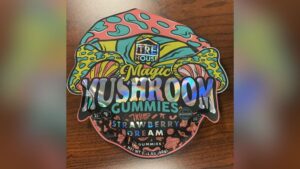
In a recent incident, Erica Kuo, a certified clinical aromatherapist and herbal aromatherapy educator, suffered a fractured toe after tripping while crossing the street. She quickly applied arnica cream, an herbal salve she always keeps on hand for emergencies. Following a hospital visit, it was confirmed that she needed a fixation device to stabilize the injury.
Utilizing Natural Remedies for Recovery
During her three-month recovery, Kuo turned to a variety of natural remedies to manage pain and inflammation. She incorporated herbal teas, botanical oils, and topical creams into her daily routine, applying them directly to her injury. These natural solutions not only alleviated her discomfort but also supported her body’s inherent healing capabilities.
In an episode of Health 1+1, Kuo emphasized the effectiveness of natural remedies in promoting recovery. She noted that these alternatives can provide substantial relief, reducing the reliance on conventional painkillers, which often come with unwanted side effects. Many individuals seeking holistic approaches to health may find inspiration in Kuo’s experience.
The Role of Herbal Remedies in Pain Management
Herbal remedies like arnica have been praised for their anti-inflammatory properties. Research indicates that arnica can significantly reduce swelling and bruising, making it a popular choice for those recovering from injuries. Kuo’s reliance on these natural treatments illustrates a growing trend toward integrating herbal solutions into personal health care.
Moreover, herbal teas, which Kuo consumed regularly, can also play a vital role in recovery. Ingredients such as ginger and chamomile are known for their soothing properties and can aid digestion and relaxation, further supporting overall well-being during the healing process.
Kuo’s approach highlights a shift in how individuals view pain management and recovery. As more people seek alternatives to pharmaceutical interventions, the demand for herbal remedies is likely to increase. This trend suggests a broader acceptance of natural treatments that align with personal health philosophies.
In conclusion, Erica Kuo’s experience serves as a reminder of the potential benefits of herbal remedies in injury recovery. By sharing her journey and insights on Health 1+1, she encourages others to explore natural options for managing pain and supporting healing. As interest in holistic health continues to grow, the role of herbs in recovery remains a compelling area for further exploration.







